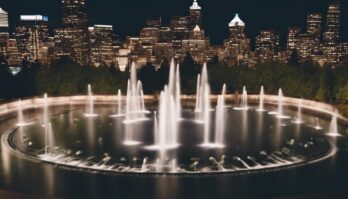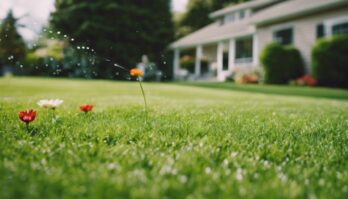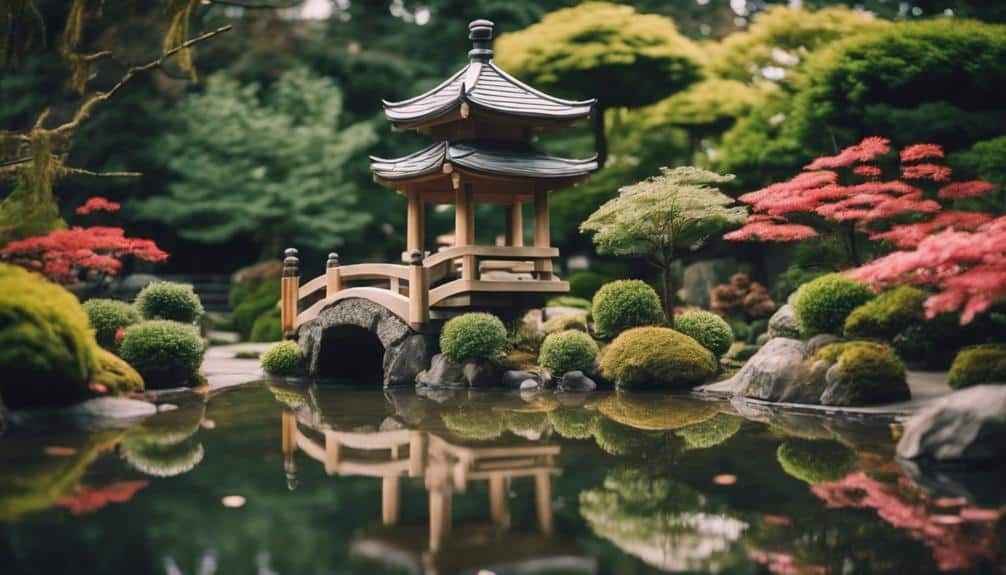
You might think that creating a Japanese garden in Seattle's unique climate could be challenging, but with the right guidance, it's entirely achievable. The key lies in understanding how to adapt traditional Japanese garden principles to suit Seattle's environment without compromising the essence of this ancient art form. By exploring the nuances of plant selection, water features, and mindful design, you can transform your outdoor space into a serene oasis that mirrors the tranquility of a traditional Japanese landscape. Discover how to harmoniously blend elements of nature and zen philosophy to craft a captivating Japanese garden that will transport you to a place of peace and beauty right in your backyard.
Key Takeaways
- Choose plants and design elements suitable for Seattle's climate and sunlight exposure.
- Integrate water features like ponds and fountains with proper maintenance for a serene atmosphere.
- Incorporate Zen garden elements like rocks and sand for meditation and balance.
- Enhance the garden with bamboo accents, lanterns, and proper plant care for an authentic and tranquil space.
Choosing the Perfect Location
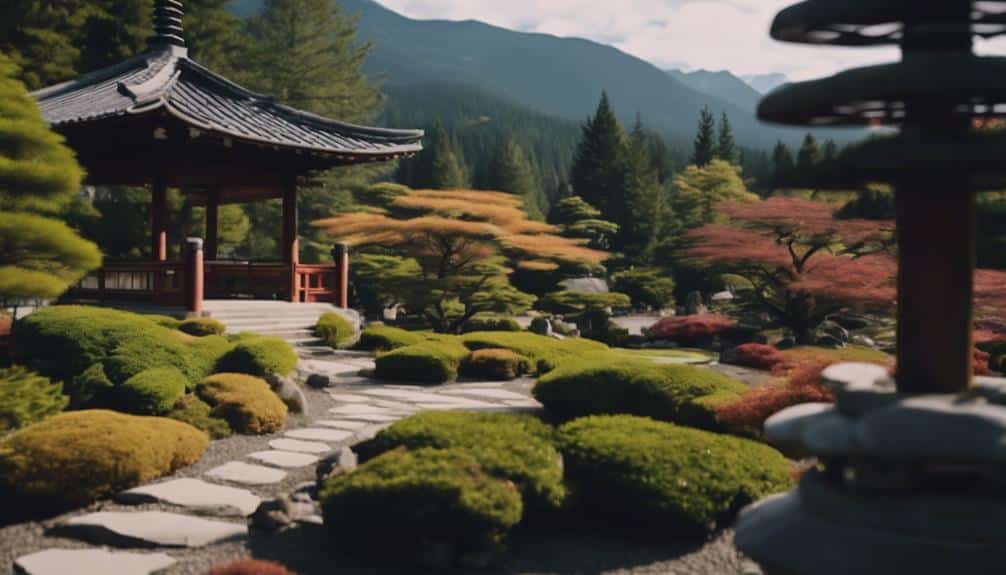
When selecting the ideal location for your Japanese garden installation in Seattle, consider the natural light patterns throughout the day to ensure optimal growth for your plants. Proper sunlight exposure is crucial for the health of your garden. Choose a spot that receives adequate sunlight based on the needs of the plants you wish to cultivate. Additionally, assess the soil quality in the area to guarantee that it can support the specific plant species you have in mind. Privacy considerations are also essential when deciding on the location of your garden. Depending on the size of your garden, you may want to place it in a more secluded area to create a serene and intimate atmosphere for your peaceful retreat.
Designing Your Japanese Garden
To create a harmonious Japanese garden in Seattle, start by envisioning the design elements that will evoke tranquility and beauty in your outdoor space. Incorporate design principles and landscaping techniques that emphasize simplicity and balance. Consider the cultural symbolism behind each element you choose, aiming for a garden that reflects the essence of nature. Strive for aesthetic harmony by combining elements such as rocks, water features, and carefully selected plants in a way that flows naturally throughout the space.
- Simplicity and Balance: Implement clean lines and uncluttered spaces.
- Natural Elements: Integrate rocks, sand, and water to mimic natural landscapes.
- Seasonal Variation: Plan for plants that showcase seasonal changes.
- Zen Influence: Infuse Zen garden elements like raked gravel or sand for meditative spaces.
Selecting Authentic Plants and Trees
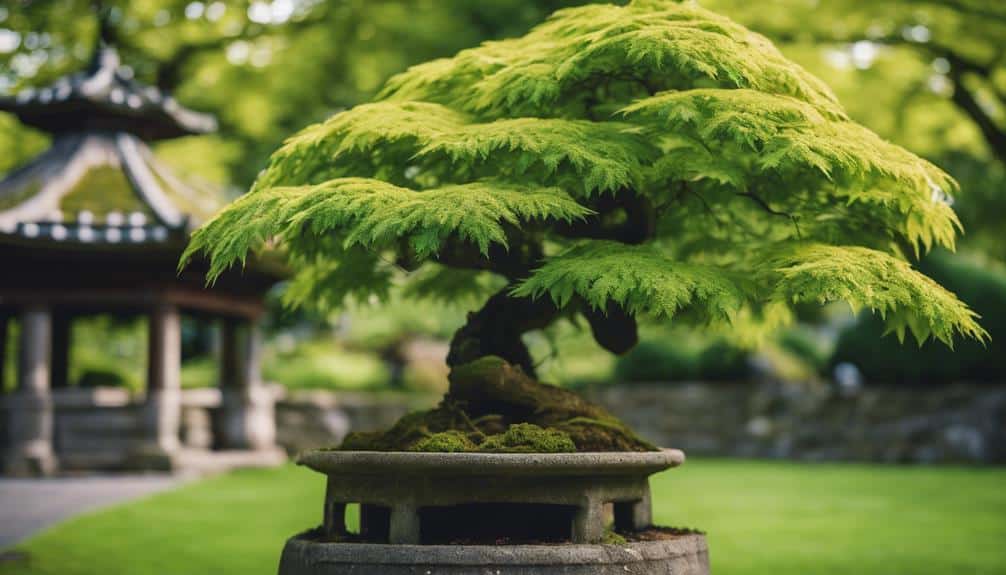
For a truly authentic Japanese garden in Seattle, carefully select plants and trees that thrive in the local climate while staying true to the traditional aesthetic principles. When choosing plants, aim for a diverse selection to create visual interest and harmony. Consider the soil composition, as Japanese gardens often feature well-draining soil to prevent waterlogging. Pruning techniques are vital to maintain the desired shape and size of the plants, reflecting the meticulous nature of Japanese garden design. Remember to provide seasonal care, adjusting watering schedules and protection from harsh weather conditions accordingly. By incorporating these elements thoughtfully, you can create a serene and picturesque Japanese garden that flourishes in Seattle's environment while capturing the essence of Japanese landscaping traditions.
Creating a Tranquil Water Feature
Imagine the gentle trickling of water echoing through your garden, bringing a sense of peace and serenity. To create a tranquil water feature, consider the layout of your pond and the strategic placement of fountains. These elements can transform your space into a soothing oasis, perfect for relaxation and contemplation.
Pond Design Tips
When designing a tranquil water feature for your Japanese garden, consider the placement and size of the pond to create a harmonious and serene atmosphere. To enhance the beauty and functionality of your pond, keep these tips in mind:
- Location: Choose a spot that receives a balanced amount of sunlight and shade for the health of water lilies and koi.
- Size: Ensure the pond is large enough to accommodate your koi comfortably and to allow for the growth of water lilies.
- Features: Incorporate a bridge over the pond for a traditional touch and stepping stones for easy access and aesthetic appeal.
- Depth: Design the pond with varying depths to create different environments for your aquatic plants and fish.
Fountain Placement Ideas
Consider the soothing sound and visual appeal of strategically placing a fountain in your Japanese garden to enhance its tranquil ambiance. When choosing a spot, ensure the fountain is visible from various viewpoints in the garden. Opt for a location where the water flow can be enjoyed and heard throughout the space. To maintain the fountain, regularly clean and check for any blockages. Incorporate decorative rocks around the fountain to create a natural look and consider surrounding it with pebble pathways for a serene touch. Proper fountain placement not only adds a calming element but also contributes to the overall aesthetic of your Japanese garden. Embrace the gentle babbling of water as it enhances the peaceful atmosphere you seek.
Installing Traditional Japanese Lanterns
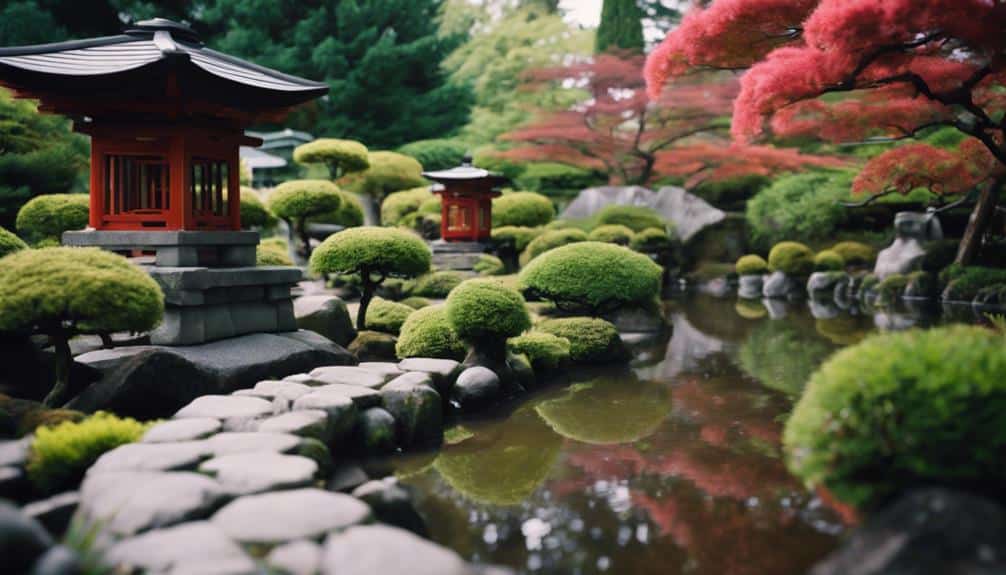
To create an authentic ambiance, consider carefully positioning the traditional Japanese lanterns in key areas of the garden installation in Seattle. These lanterns not only add a traditional touch but also provide subtle lighting effects that enhance the overall aesthetic of your Japanese garden. Here are some tips to help you make the most of your lantern placement and lighting effects:
- Height Variation: Place lanterns at different heights to create visual interest and depth.
- Pathway Illumination: Use lanterns to light pathways for both practicality and a serene atmosphere.
- Silhouette Casting: Position lanterns strategically to cast beautiful shadows on surrounding plants and structures.
- Water Feature Enhancement: Place lanterns near water features to reflect their light and create a mesmerizing effect.
Incorporating Zen Garden Elements
Imagine creating a serene oasis in your backyard, using rocks strategically placed for tranquility, intricate raked sand patterns for a meditative touch, and a minimalist selection of plants for a harmonious balance. By incorporating these Zen garden elements, you can transform your outdoor space into a peaceful retreat that encourages mindfulness and relaxation. Embrace simplicity and nature's beauty as you design your own Japanese-inspired haven.
Rocks for Serenity
Among the various elements that contribute to the serene ambiance of a Japanese garden, the strategic placement of rocks plays a pivotal role in creating a harmonious and tranquil landscape. When incorporating Zen garden elements into your design, consider the following:
- Rock Arrangements: Carefully position rocks to symbolize mountains or islands, creating focal points for meditation.
- Meditation: Rocks can serve as meditation tools, with their shapes and textures encouraging a peaceful mind.
- Zen Rock Gardens: Emulate the simplicity and balance of Zen rock gardens by using rocks sparingly but purposefully.
- Harmony: Achieve harmony by blending rocks of different sizes and shapes, representing the natural world's diversity within your garden.
Raked Sand Patterns
Consider the artistry and tranquility that can be achieved through the meticulous creation of raked sand patterns in your Japanese garden design. Sand garden symbolism plays a crucial role, with lines representing flowing water and circles symbolizing harmony and completeness. To incorporate contemporary sand designs, experiment with asymmetrical patterns or geometric shapes that reflect modern aesthetics while still honoring traditional Japanese principles. You can use tools like rakes or sticks to create intricate patterns that evoke a sense of calm and balance. Remember, the act of raking the sand itself can be a meditative practice, allowing you to focus on the present moment and cultivate a peaceful state of mind. Embrace the simplicity and elegance of raked sand patterns in your garden to enhance its Zen essence.
Minimalist Plant Selection
Selecting a minimalistic array of plants that embody Zen garden elements can significantly enhance the serene ambiance of your Japanese garden design. When choosing plants, keep in mind the importance of pruning techniques to maintain clean lines and simplicity. Opt for plants that thrive in Seattle's climate and soil composition to ensure easy maintenance. Consider the seasonal care requirements of each plant to ensure they flourish year-round in your garden. Additionally, be mindful of the water requirements of each plant to create a harmonious balance in your garden's ecosystem. By carefully selecting and caring for a few key plant species, you can create a tranquil and minimalist Japanese garden that exudes peace and beauty.
- Prioritize pruning techniques for clean aesthetics
- Choose plants suited to Seattle's climate and soil composition
- Consider seasonal care needs for year-round beauty
- Maintain a harmonious water balance for plant health.
Enhancing With Bamboo Accents
To add a touch of elegance and tranquility to your Japanese garden installation in Seattle, consider incorporating bamboo accents strategically throughout the landscape. Bamboo fencing can create boundaries while maintaining an organic feel, adding privacy to your meditation corner. Bamboo's natural aesthetic blends well with the minimalist design of Japanese gardens, enhancing the overall atmosphere. Here's a practical way to integrate bamboo into your garden:
| Bamboo Accent | Placement |
|---|---|
| Bamboo Fountain | Near a stone pathway |
| Bamboo Lanterns | Around the meditation corner |
| Bamboo Wind Chimes | Hanging from a tree |
These additions will not only elevate the visual appeal but also bring a sense of harmony and peacefulness to your outdoor space.
Adding a Koi Pond
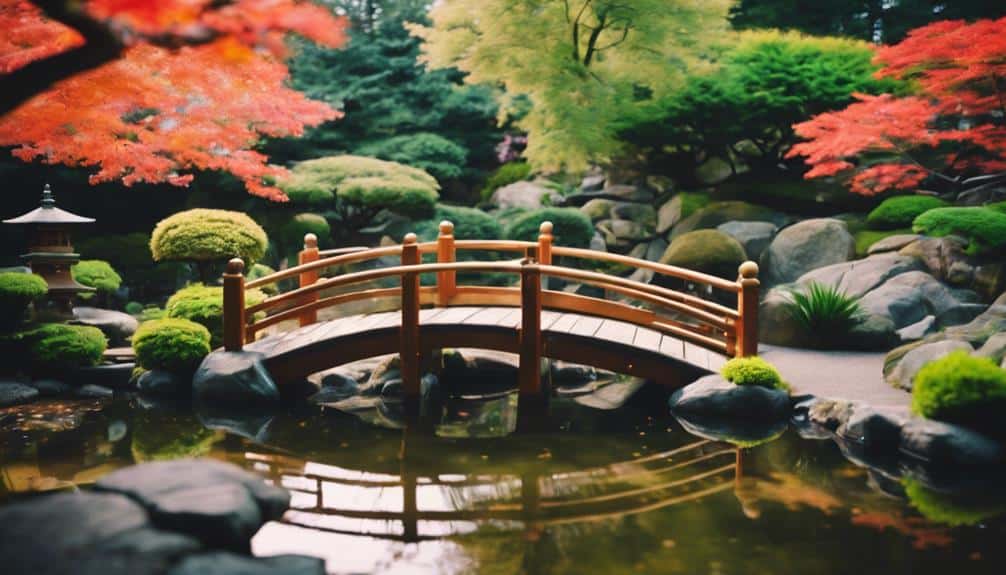
Immerse your Japanese garden in Seattle with serenity and grace by incorporating a mesmerizing Koi Pond. To ensure your Koi thrive in this serene setting, pay attention to Koi care and landscaping. Here are some considerations:
- Proper Koi Care: Research the specific needs of Koi fish regarding diet, water temperature, and space requirements.
- Strategic Landscaping: Surround the pond with lush greenery and rocks to create a harmonious environment for the Koi to swim and thrive.
- Water Quality Maintenance: Invest in a reliable filtration system to keep the water clean and clear for your Koi's health.
- Filtration System: Choose a filtration system that suits the size of your pond and ensures optimal water quality for your Koi friends.
Maintaining Your Japanese Garden
Enhance the longevity and beauty of your Japanese garden installation in Seattle by mastering the art of maintaining its intricate elements. To keep your garden pristine, utilize proper pruning techniques to shape trees and shrubs while promoting healthy growth. Regularly inspect plants for overgrowth and remove dead or damaged branches to maintain the elegant balance of your garden. Embrace moss cultivation to add a touch of authenticity and serenity to your landscape. Keep moss moist and free of debris, ensuring it thrives in the shaded areas of your garden. By attending to these details with care and consistency, you can preserve the essence of your Japanese garden and create a tranquil oasis in the heart of Seattle.
Frequently Asked Questions
Can I Install a Japanese Garden in a Small Urban Space, or Does It Require a Large Yard?
You can definitely create a Japanese garden in a small urban space. With urban gardening and container gardening techniques, you can adapt the design creatively to fit your space limitations while still capturing the essence of a traditional Japanese garden.
Are There Any Specific Regulations or Permits Needed to Install a Japanese Garden in Seattle?
When creating your Japanese garden in Seattle, check permit requirements. Urban gardening presents design challenges, but with sustainable landscaping, you can achieve a serene oasis. Research local regulations to ensure compliance.
How Can I Incorporate Sustainable Practices Into My Japanese Garden Design?
To incorporate sustainable practices into your Japanese garden design, consider using native plants, creating a rainwater harvesting system, and incorporating permeable surfaces for water conservation. These choices will enhance sustainability and reduce environmental impact.
What Are Some Common Challenges or Obstacles I May Face When Installing a Japanese Garden in Seattle?
When installing a Japanese garden in Seattle, you might encounter weather challenges and unique soil conditions. Overcome these hurdles by selecting plants that thrive in the area, and stay on top of maintenance for a flourishing oasis.
Are There Any Cultural Considerations I Should Keep in Mind When Designing My Japanese Garden in Seattle?
When designing your Japanese garden in Seattle, cultural considerations are crucial. Incorporate design elements like stone lanterns, bamboo fences, and water features to honor Japanese traditions. Pay respect to the harmony and balance deeply rooted in Japanese culture.

